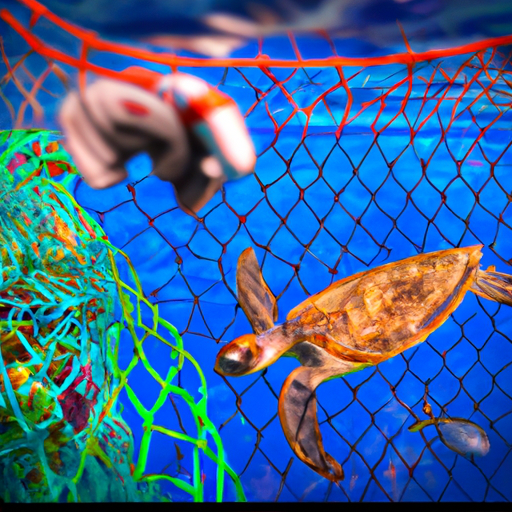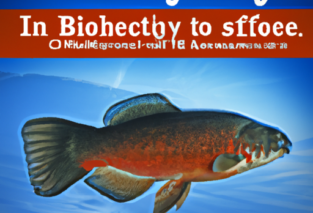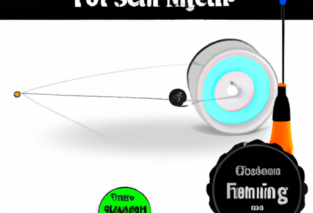Are you an avid angler looking to expand your knowledge and skills? Look no further! “Understanding And Dealing With Bycatch: A New Angler’s Perspective” is here to provide you with valuable insights on the often misunderstood world of bycatch. This comprehensive guide combines expert advice, practical tips, and a fresh perspective to help you navigate the challenges of bycatch and become a more responsible and environmentally-conscious angler. Get ready to dive into an exciting journey that will enhance your fishing experience and make a positive impact on our oceans.

What is Bycatch?
Definition of Bycatch
Bycatch refers to the unintentional capture of non-target species while fishing for a specific target species. It is an unfortunate consequence of commercial fishing, where fishermen often use large nets and fishing gear that can entangle or trap not only the intended catch, but also other marine animals such as dolphins, turtles, and seabirds.
Types of Bycatch
There are several types of bycatch that occur in various fishing methods. For instance, in trawling, where large nets are dragged through the water, bycatch can include seabirds, turtles, and marine mammals. Longline fishing, involving thousands of baited hooks attached to a single line, often results in the incidental capture of sharks, sea turtles, and seabirds. Additionally, gillnet fishing, which uses walls of netting to capture fish, is notorious for catching dolphins, seals, and other non-target species.
Causes of Bycatch
Lack of Selectivity in Fishing Gear
One of the primary causes of bycatch is the lack of selectivity in fishing gear. Large nets and gear that are not designed to discriminate between target and non-target species contribute to the unintentional capture of various marine animals. The size, shape, and mesh size of fishing nets can greatly influence the extent of bycatch, as can the way in which the gear is deployed and operated.
Habitat Destruction
Another significant factor contributing to bycatch is habitat destruction. Fishing methods that cause widespread damage to sensitive habitats, such as coral reefs and seafloors, can disrupt ecosystems and result in the unintentional capture of non-target species. Destructive fishing practices, such as bottom trawling, can devastate essential habitats, leading to the decline of numerous species.
Illegal, Unreported, and Unregulated Fishing
Illegal, unreported, and unregulated (IUU) fishing exacerbates bycatch issues. When fishing operations are conducted outside of regulated frameworks, there is often little to no oversight or enforcement of bycatch mitigation measures. This can lead to higher rates of bycatch, as well as the targeting of protected or endangered species without consequence.
Climate Change Impact
The effects of climate change can also contribute to increased bycatch rates. As ocean temperatures rise and ecosystems shift, the distribution and behavior of marine species can change. This can result in unintended interactions between fishing gear and non-target species that were previously less affected.
Consequences of Bycatch
Ecological Consequences
Bycatch has far-reaching ecological consequences. The entanglement or capture of non-target species can disrupt marine food webs and alter predator-prey dynamics. The removal of certain species from the ecosystem can have cascading effects, leading to imbalances in population sizes and ecological processes.
Species and Ecosystem Decline
The unintentional capture of non-target species through bycatch can contribute to the decline of vulnerable and endangered species. Marine mammals, such as dolphins and sea turtles, often fall victim to bycatch, putting their populations at risk. Furthermore, the destruction of habitats through destructive fishing practices can result in the degradation and loss of crucial ecosystems.
Economic Impact
Bycatch also has significant economic implications. The capture and subsequent discarding of non-target species represent a waste of resources. Fishermen may face reduced profitability due to the loss of valuable catch and increased expenses associated with bycatch. Furthermore, the decline of target species due to bycatch can negatively affect fishery-dependent communities and the overall seafood industry.
Social and Cultural Implications
The consequences of bycatch extend beyond the ecological and economic realms, impacting the social and cultural fabric of coastal communities. Many fishing communities rely heavily on traditional fishing practices, and the presence of bycatch undermines their livelihoods and cultural traditions. Additionally, bycatch incidents involving charismatic species, such as dolphins and sea turtles, can lead to public outcry and damage the reputation of fishing industries.

Existing Solutions for Bycatch
Effective Gear Modifications
One of the most effective ways to reduce bycatch is through gear modifications. By incorporating changes in the design of fishing gear, such as the use of larger mesh sizes or escape panels, fishermen can create more selective gear that allows non-target species to escape while still capturing the desired species. These modifications have shown promising results in reducing bycatch rates in various fisheries.
Bycatch Reduction Devices (BRDs)
Bycatch reduction devices (BRDs) are specialized tools or mechanisms that help mitigate the accidental capture of non-target species. BRDs can be incorporated into fishing gear to either exclude or allow the escape of certain species. For instance, turtle excluder devices (TEDs) are utilized to prevent sea turtles from being trapped in shrimp trawls, allowing them to swim out through an escape hatch.
Time and Area Closures
Implementing time and area closures can be an effective strategy in reducing bycatch. By designating certain marine areas as off-limits to fishing during specific times of the year, fishermen can avoid areas with high bycatch rates or during sensitive times, such as breeding seasons. These closures provide vital protection to non-target species, allowing their populations to recover and thrive.
Better Fishing Practices
Improving fishing practices and adopting sustainable fishing methods is crucial in addressing bycatch. Encouraging the use of more selective fishing techniques, such as hook and line fishing or trap fishing, can significantly reduce non-target species captures. Additionally, promoting responsible fishing practices, such as proper equipment handling and implementing best practices for reducing bycatch, can make a significant difference in minimizing bycatch.
Bycatch Management and Policy
International Regulations
Addressing bycatch issues requires international cooperation and the establishment of comprehensive regulations. International bodies, such as the Food and Agriculture Organization (FAO) and Regional Fisheries Management Organizations (RFMOs), work to develop and enforce regulations aimed at reducing bycatch. These regulations often include minimum standards for fishing gear, catch limits, and reporting requirements.
National and Regional Policies
To effectively manage bycatch, countries and regions have instituted their own policies and regulations. These can include measures such as gear restrictions, bycatch reporting requirements, and the establishment of marine protected areas. It is essential for governments to work in conjunction with fishery stakeholders to develop and implement effective policies that consider both conservation and the socioeconomic needs of fishing communities.
Collaboration and Partnerships
Collaboration among various stakeholders, including governments, fishermen, scientists, and conservation organizations, is crucial in addressing the complex issue of bycatch. By working together, these groups can share knowledge, expertise, and resources to develop and implement innovative solutions. Partnerships can help promote sustainable practices, support research, and generate public awareness about the importance of reducing bycatch.
The Role of Anglers in Bycatch Reduction
Understanding the Issue
Anglers play a crucial role in bycatch reduction efforts. By understanding the impacts of bycatch and being aware of the various types of fishing gear and techniques that contribute to bycatch, anglers can make more informed choices when it comes to their fishing practices. Educating oneself about the issue is the first step towards becoming a responsible and conservation-minded angler.
Implementing Selective Fishing Techniques
As an angler, you can help reduce bycatch by implementing selective fishing techniques. By using gear and methods that specifically target the desired species while minimizing the capture of non-target species, you can significantly reduce unintentional harm to marine ecosystems. Opting for more selective gear, such as circle hooks and barbless hooks, can decrease the likelihood of catching unwanted species.
Promoting Conservation
Promoting conservation values and practices among fellow anglers is essential in bycatch reduction. By sharing knowledge, advocating for sustainable fishing practices, and encouraging responsible behavior on and off the water, you can inspire others to prioritize the protection of non-target species. Together, anglers can be powerful advocates for change and contribute to the overall reduction of bycatch.
Management Recommendations for New Anglers
Educating Yourself
For new anglers, educating yourself about the impacts of bycatch and the various strategies to reduce its occurrence is key. Understanding the fishing gear and techniques that minimize bycatch, as well as the importance of sustainable fishing practices, can help you make informed decisions that prioritize conservation.
Using Selective or Bycatch-Reducing Gear
When selecting your fishing gear, opt for equipment that is designed to be selective or reduce bycatch. This can include hooks that are less likely to harm non-target species or fishing nets with larger mesh sizes. By choosing gear that prioritizes the capture and release of desired species while minimizing harm to other marine animals, you can actively contribute to reducing bycatch.
Reporting Bycatch Incidents
If you accidentally capture a non-target species while fishing, it is important to report the incident. By reporting bycatch incidents to the appropriate authorities or fisheries management organizations, you provide valuable data that can help identify areas of concern and inform future management strategies. Reporting bycatch incidents is crucial in raising awareness about the issue and working towards effective mitigation measures.
Advocating for Policy Changes
As an angler, you have a unique perspective and a voice that can influence policy changes. By actively engaging with local, national, and international fishing communities and organizations, you can advocate for stronger regulations and policies aimed at reducing bycatch. Participating in public consultations, writing to policymakers, or joining conservation groups can help amplify your voice and contribute to meaningful change.
Potential Future Developments
Technological Innovations
Technological advancements continue to offer promising solutions for reducing bycatch. Innovations such as underwater cameras and artificial intelligence can aid fishermen in monitoring their gear and identifying non-target species before they are captured. Additionally, the development of more efficient and species-selective fishing gear, such as smart hooks or acoustic deterrents, holds great potential in minimizing bycatch.
Sustainable Fishing Certification
The introduction of sustainable fishing certification programs, such as the Marine Stewardship Council (MSC) or the Aquaculture Stewardship Council (ASC), has helped promote responsible fishing practices and reduce the impact of bycatch. These certification programs provide consumers with assurance that the seafood they consume is sourced from fisheries that adhere to sustainable fishing practices, including measures to minimize bycatch.
Global Conservation Efforts
International collaborations and conservation efforts are essential in addressing the global issue of bycatch. Through increased cooperation, research, and public awareness campaigns, the international community can work towards creating a more sustainable and responsible fishing industry. Conservation initiatives, such as the Global Ghost Gear Initiative (GGGI), strive to tackle the problem of abandoned fishing gear, which is a significant contributor to bycatch.
Conclusion
As a new angler, understanding and addressing the issue of bycatch is crucial for contributing to the conservation of marine ecosystems. By educating yourself, implementing selective fishing techniques, and advocating for policy changes, you can actively contribute to reducing bycatch and promoting sustainable fishing practices. Together, anglers, fishermen, governments, and conservation organizations can work towards a future where bycatch is minimized, allowing marine species to thrive and ecosystems to flourish.





